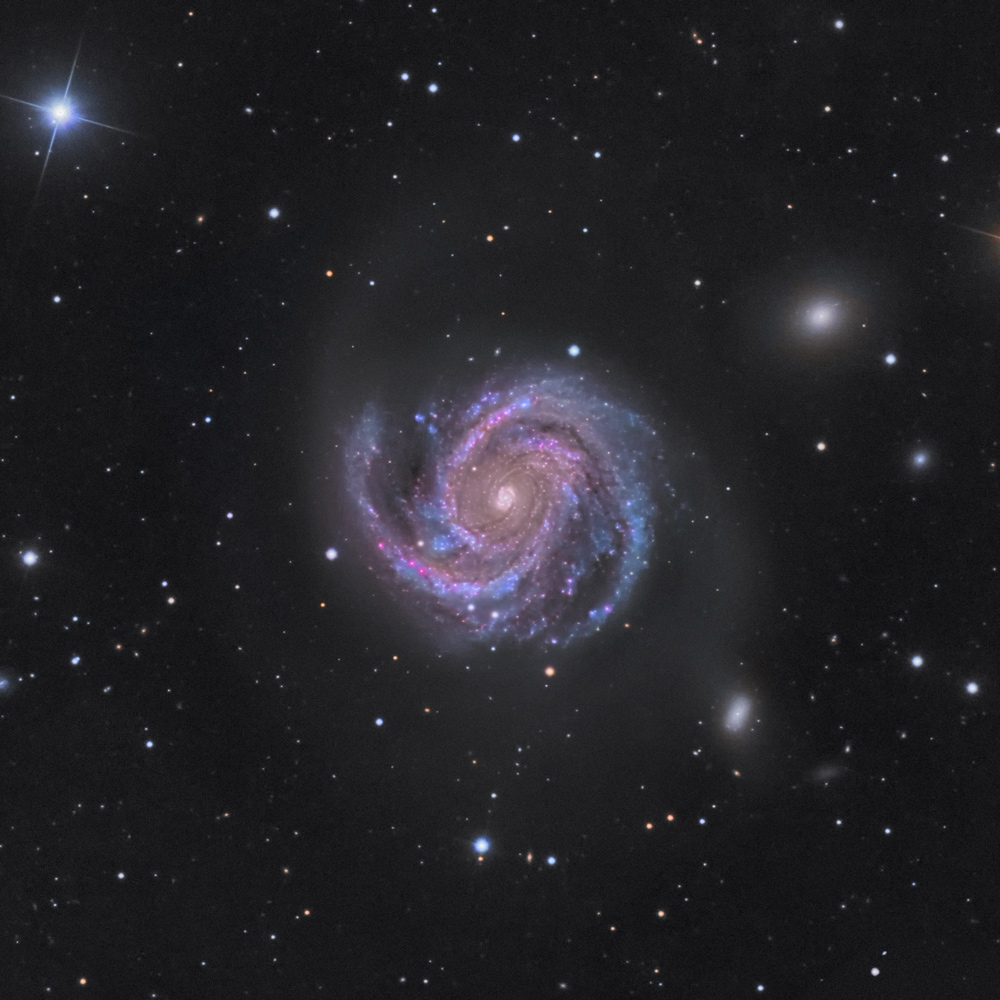

M100 is a magnitude 10.1 (not bright enough to see without dark skies and binoculars) spiral galaxy in Coma Berenices, 56 million light years from Earth (that's a long way--farther
away than most of the galaxies I've imaged--and explains why it's apparent size is so small). It is a grand design spiral galaxy,
with about 100 billion stars (perhaps one-third as many stars as our Milky Way is thought to have). It has a diameter of approximately 106,000 light years (significantly less than our Milky Way).
The visible portion of M100 is about one-sixth of the angular size of a full moon.
Many galaxies have a super-massive black hole in their center; M100 is no exception.
There are many other galaxies in this image (especially in the uncropped versions linked above), most priminently NGC4312, the edge-on spiral galaxy in the upper left of the uncropped image,
and the dwarf galaxies that are companions of M100 (NGC4323 and NGC4328), which appear as fuzzy blobs on the right side of M100. There are many other fuzzy blobs and/or oblong objects in the image,
all galaxies.
Copyright 2020 Mark de Regt